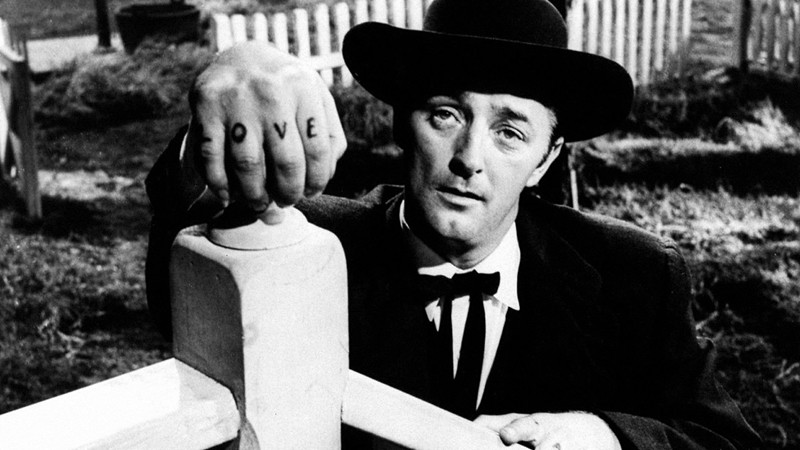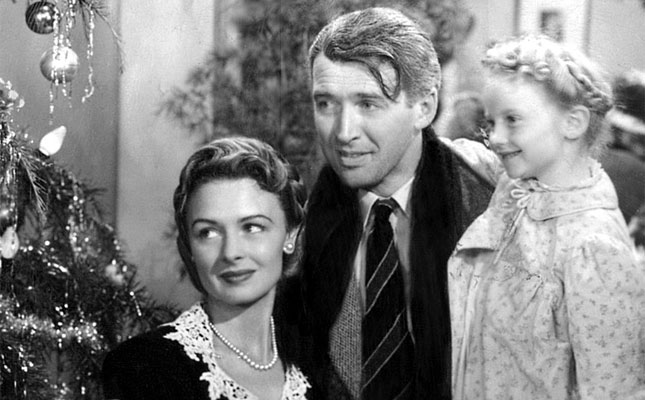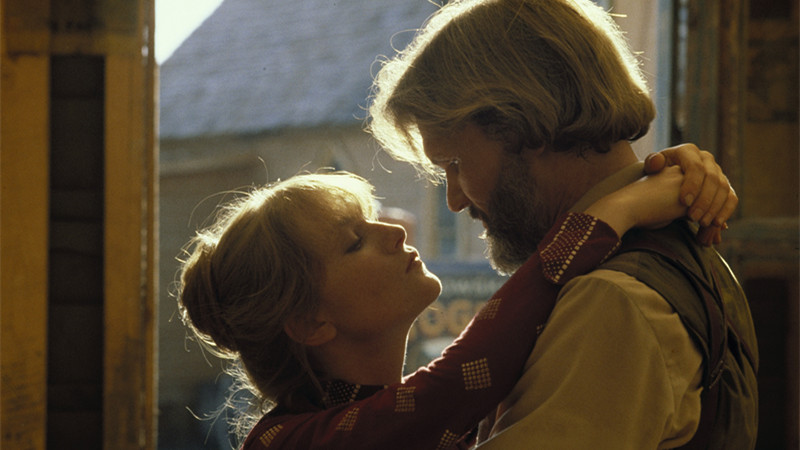5. The Night of the Hunter

When an actor decides to work behind the camera as director, the results often vary. Through the history of cinema, many actors proved to be inadequate for the role, and others managed to make a separate career out of it.
One case of this specific category of actor-directors is quite unique, that of Charles Laughton, who never directed again after the poor reception of his first film. A respected thespian, he directed a number of plays before deciding to turn the novel “The Night of the Hunter” into a feature film.
The film is now regarded as a true gem, a thriller of rare strength, story-wise, and also visually. Laughton proved to be an inventive mind behind the camera, and filled the film with great directorial touches, while also boosting his actors’ performances (especially Robert Mitchum’s).
The fame of “The Night of the Hunter” is a mesmerizing, beautifully dark tale came too late: the initial reviewers were not impressed by the film, and found little to nothing extraordinary in it. As we said, “The Night of the Hunter” is now greatly respected, and every true film fan holds it in high regard.
4. It’s a Wonderful Life

Christmas movies constitute a genre of their own, and on a “best Christmas movies” list the first place would probably go to “It’s a Wonderful Life” (although many would more or less ironically argue “Die Hard” should take that spot).
Not only it is a perfect example of classic filmmaking, it also represents popular American cinema at its best, with a charming lead, a moving story, and the omnipresent warm feeling that only December’s festivities give. Strangely enough, when it was released in 1946, the film got a lukewarm reception.
Apparently, the picture’s sentimentalism did not sit well with the critics, who felt a true lack of realism. Aside from this aspect, the modest (although not terrible) box office return of the film led many to consider this a miss from Frank Capra, who at the time was undoubtedly a massive cinematic force.
Sentimentality won in the long run, and “It’s a Wonderful Life” proved to be the perfect dose of optimism needed during the holidays, ironically enough, considering how pessimistic and bleak the picture actually is for most of its run before the final resolution of events.
3. Heaven’s Gate

Michael Cimino had quite an unusual Hollywood career. He passed away in 2016 and his allure as a director still owes a large part of its fame to “The Deer Hunter,” a true masterpiece of the ‘70s with fundamental performances by Robert De Niro, Christopher Walken and Meryl Streep. If “The Deer Hunter” is Cimino’s most famous and appreciated work, “Heaven’s Gate” is the most infamous.
An enormous number of stories are known about the shooting of the film, but most importantly, it was the release of “Heaven’s Gate” that made it unforgettable for film buffs. The film was one of the greatest box office flops the world had ever seen, and it actually drove United Artists to financial failure.
The movie went ridiculously over budget, the production was constantly stalled by Cimino’s obsessive directing style, and most importantly, it was simply hated by the critics. “[T]he most scandalous cinematic waste I have ever seen,” wrote Roger Ebert, and this was not even the worst thing written about the movie.
In hindsight, it is hard to understand exactly how much the critics were influenced by the stories coming out of the chaotic set (endless retakes for every scene, weeks of delays into production, non-stop rebuilding of the sets, and so on), but this does not change that few movies in cinema history have been received so poorly from public and critics alike.
It took some years, but the reevaluation of “Heaven’s Gate” finally happened: free of any animosity towards the very controversial director, fans and critics could appreciate the film in a new way, especially after a 216-minute director’s cut was released.
Perhaps now the film is extremely lauded just to compensate the scathing reviews it originally got, but this would not change that what was once seen as a pompous, over-directed, over-written confusing tale about America, can now be read as an epic work fueled by ambition, and rich of pure cinematic art.
2. The Rules of the Game

Jean Renoir is one of the great masters of French cinema. His craft and unique sensibility gave him large praise while he was still working. This explains why in 1939 “La Règle du Jeu” got an elaborate promotional marketing, and was thought to simply become another one of Renoir’s successes, like “La grande illusion” and “La Bête humaine” before it.
Surprisingly, the film flopped, both critically and with the public, and Renoir had to make a new cut, shortening the film from 113 to 85 minutes (the new version still failed). Even if the timing of release (just before the beginning of WWII, in a tense European environment) might have had a role in the reception of a film by a famously left-leaning director, the reports are of a universally bad reception that had little to do with the political climate. Now considered an absolute masterpiece, the reception of “The Rules of the Game” has become an object of discussion in itself.
The consensus is that the critics and public alike were simply not ready for such a peculiar movie, which can now seem nuanced, but then was more easily seen as off-putting. Not only that, but the film actually got banned on the grounds of its immorality. It took less than 20 years for the critics to change their view: in 1952, on the first “greatest film ever made” poll by Sight and Sound, “The Rules of the Game” came in 10th place.
1. Vertigo

The critical reception of Alfred Hitchcock’s films constitutes one of the crucial moments in the history of the cinematic medium in the second half of the 20th century. Thanks to the Cahiers du cinéma and a general shift in the approach to reviewing movies, after the 1960’s, Hitchcock was given his rightful place as one of cinema’s greats.
Sure, his films were hugely successful, but they certainly did not apply to the category of respected artistic endeavors. New and more subtle critics found out how much was actually hidden behind Hitchcock’s deceivingly entertaining cinema. For more on this new approach to the director’s work, look no further than Francois Truffaut’s famous interview with him.
“Vertigo” is the epitome of Hitchcock’s varying success with critics. Now it is considered a masterpiece, to the point of surpassing “Citizen Kane” on the renowned Sight and Sound critics’ poll for the best film ever made (the magazine’s editor defined it as “the ultimate critics’ film”). Yet, when it was released, it got dismissive and unfavorable reviews, mostly pointed toward it being too far-fetched.
A perceived excess of details and an unforgivingly dark plot about obsession were apparently not the best features to make the film a critical darling. The main fault of “Vertigo” was essentially that of going too far into a territory that mainstream cinema simply did not know enough: that of meta-narration and of the obsessive use of details as guiding force of the story.